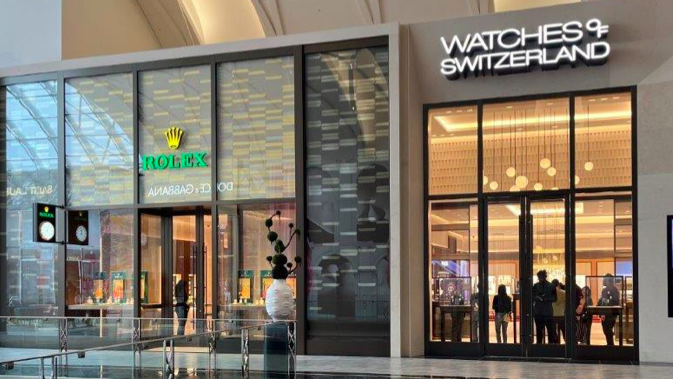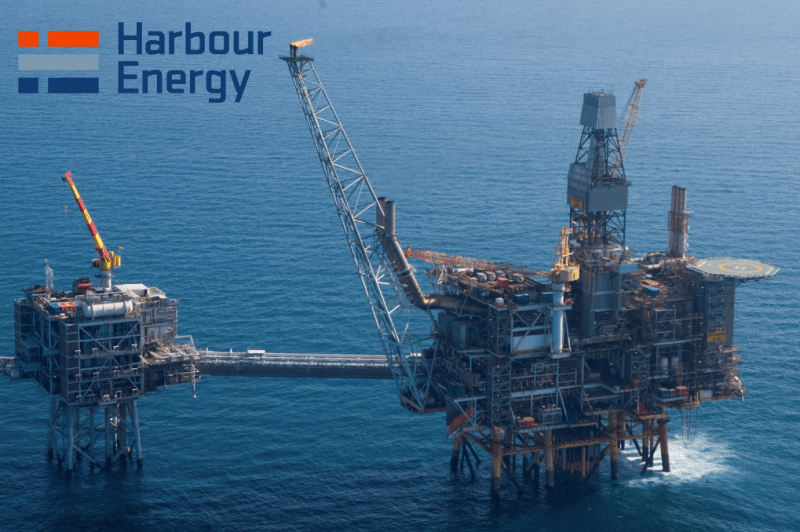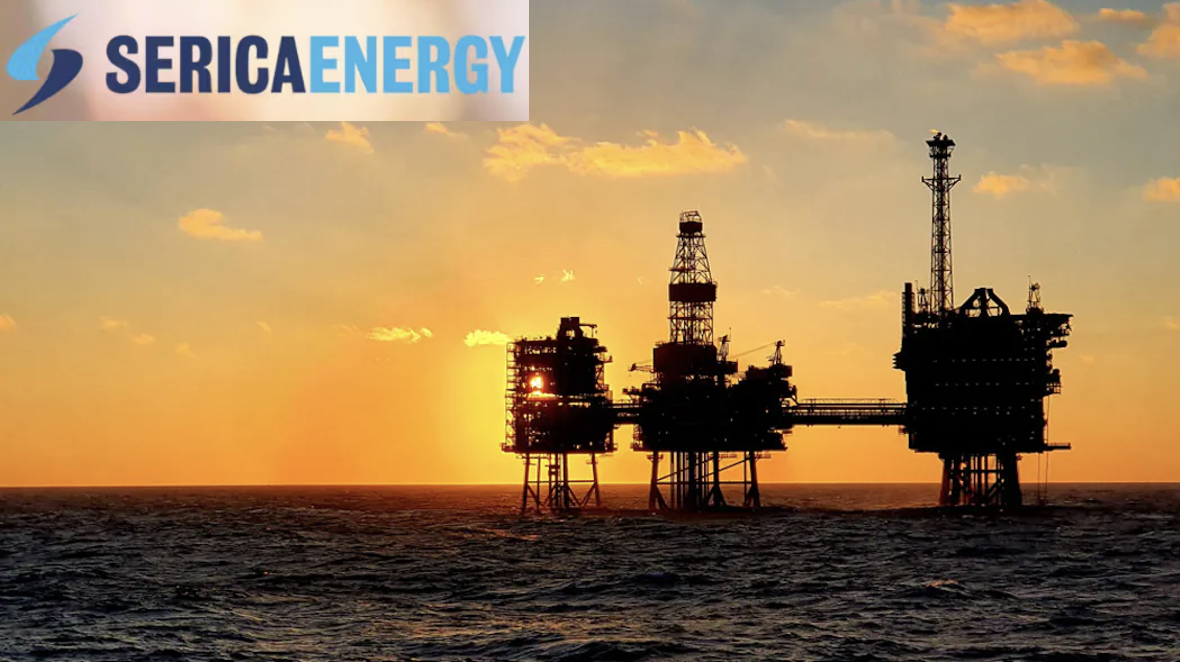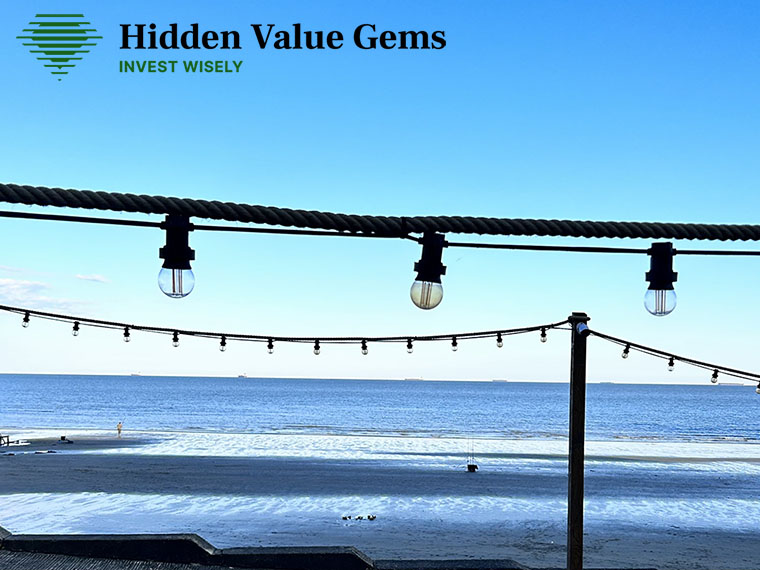Earlier this year, I started publishing my Monthly Stock Idea Lab on the last Sunday of every month. Today is the fifth edition. The idea behind this product is to improve the investment results by focusing the resources on better companies while eliminating businesses with “inherent” problems (no competitive advantages, no alignment of interests between key stakeholders, unsustainable earnings, poor returns on capital and capital allocation track record, weak balance sheets).
Since spotting a great business is relatively easy, I prefer to look for companies that temporarily face issues that can mask their inherent strengths and make them look just like ordinary businesses. In an ideal case, there are two drivers for the future upside: 1) improved financial performance and 2) rerating of a stock once the market becomes aware of the operational progress.
Looking for ideas in less crowded places (e.g. small caps) or out-of-favour markets (e.g. resources, emerging markets) can increase the odds and allow one to purchase good businesses priced as mediocre ones.
The flip side is that it can take longer to fix the problems or that these problems become permanent. The fact that a company joins the list does not mean it is an automatic BUY signal. It suggests, rather, that a company is worth researching further since it has the necessary attributes to make it a successful investment.
In today’s issue, I present five new ideas, one of which I bought this week. All of these companies have a net cash position (one has zero net debt) and offer double-digit shareholder distributions. I also share my thoughts on Watches of Switzerland following its 21% collapse on Friday. I profiled the company in last month’s edition and opened a 1.7% position in the stock.
So, let’s get started.
Since spotting a great business is relatively easy, I prefer to look for companies that temporarily face issues that can mask their inherent strengths and make them look just like ordinary businesses. In an ideal case, there are two drivers for the future upside: 1) improved financial performance and 2) rerating of a stock once the market becomes aware of the operational progress.
Looking for ideas in less crowded places (e.g. small caps) or out-of-favour markets (e.g. resources, emerging markets) can increase the odds and allow one to purchase good businesses priced as mediocre ones.
The flip side is that it can take longer to fix the problems or that these problems become permanent. The fact that a company joins the list does not mean it is an automatic BUY signal. It suggests, rather, that a company is worth researching further since it has the necessary attributes to make it a successful investment.
In today’s issue, I present five new ideas, one of which I bought this week. All of these companies have a net cash position (one has zero net debt) and offer double-digit shareholder distributions. I also share my thoughts on Watches of Switzerland following its 21% collapse on Friday. I profiled the company in last month’s edition and opened a 1.7% position in the stock.
So, let’s get started.
Update on Watches of Switzerland (WOSG LN)

Source: Watches of Switzerland Investor Presentation
This Friday (25 August), the stock plunged almost 30% before recovering slightly to close at 548.5p (-20.9%). This was caused by the unexpected announcement that Rolex (Swiss-based producer of the legendary watches) decided to acquire one of its authorised retailers, Bucherer. Bucherer was founded in 1888 in Switzerland. The founder’s sons partnered with Rolex in 1924. There are over 100 stores today, mainly in Switzerland, the US, Germany and the UK. Bucherer does not disclose its financial performance. It says that Rolex remains its most important brand, sold in 53 stores.
Rolex is one of the most popular luxury watches, yet it remains a highly secretive company with no public financials. The business is run by a foundation. One of the critical features of the company’s strategy had been a pure focus on manufacturing. The sales are carried out by authorised retailers.
This acquisition of Bucherer appears to be a step out of its tradition as Rolex enters the retail market.
However, both Rolex and Watches of Switzerland have confirmed that this move was the reaction to the succession situation at Bucherer rather than a strategic decision to start the retail operations. Jorg Bucherer, an 86-year-old grandson of the founder, Carl Bucherer, exclusively owned Bucherer.
Mr Bucherer has no family succession, and his wishes are to form a legacy foundation with the proceeds from the sale of the company.
According to Watches of Switzerland, Rolex will not be involved in the operations of Bucherer, nor will it change product allocation or distribution. Rolex will appoint non-executive members to the board of Bucherer, planning to keep the business independently run.
My take and course of action: I see the reasons for market concerns. Even if Rolex has no serious intentions to expand in retail now, things may change later. The management of Bucherer may try to persuade Rolex to expand the partnership, get better access to its products or get other benefits. However, I also think this would be a slow process, and such a scenario is not given.
The success of Rolex depends on the image of exclusivity, any disruption or bad PR will hurt the brand. So, it is unlikely that the company will suddenly start to rock the boat. Bucherer is big in Switzerland and the US but much smaller in other markets. Watches of Switzerland has a more prominent presence in the UK (roughly 10x store count and sales), US (47 showrooms vs 30) and some other countries.
Most luxury watch retailers have been operating for 100+ years. It takes time to build relationships and trust. I see no point for Rolex to change their successful relationship with Watches of Switzerland.
With about 7% market share of the global market for Rolex products, Watches of Switzerland is a vital partner for Rolex. Even customer reviews are higher for the company and its other brands (e.g. Goldsmith) than its rivals, including Bucherer. Watches of Switzerland has an average customer rating of 4.5 (4.8 for its online site), while Bucherer has only a 4.2 rating.
Watches of Switzerland offers more value than just a watch re-seller. The company has been expanding in the pre-owned, repair&servicing, and jewellery segments.
The company’s latest guidance points to 8-11% sales growth in FY24 with adjusted EBIT margin of 10.7% (“in line with FY23”). This translates into £179mn adjusted EBIT and £112mn net income (an EPS of £0.47). Assuming no dramatic changes to macro, FY25 profitability should improve as the company finishes renovations at some flagship stores. The consensus FY25 EPS estimate is £0.6.
At 550p market price, the company’s shares are currently valued at 11.7x and 9.2x PE based on FY24 and FY25 estimates, respectively.
I had a relatively small position of 1.7% (at cost) and decided to buy on Friday’s weakness to maintain the same weight. In the near future, the risks lie with the economy and normalisation of watch demand following the COVID boom. Expanding online marketplaces and shifting demand into the pre-owned segment are also severe risks in the medium term. Taking this into account, I do not plan to increase my position aggressively.
The next big event for the company will be in a couple of months when management will provide an updated long-term strategic plan and key targets.
Rolex is one of the most popular luxury watches, yet it remains a highly secretive company with no public financials. The business is run by a foundation. One of the critical features of the company’s strategy had been a pure focus on manufacturing. The sales are carried out by authorised retailers.
This acquisition of Bucherer appears to be a step out of its tradition as Rolex enters the retail market.
However, both Rolex and Watches of Switzerland have confirmed that this move was the reaction to the succession situation at Bucherer rather than a strategic decision to start the retail operations. Jorg Bucherer, an 86-year-old grandson of the founder, Carl Bucherer, exclusively owned Bucherer.
Mr Bucherer has no family succession, and his wishes are to form a legacy foundation with the proceeds from the sale of the company.
According to Watches of Switzerland, Rolex will not be involved in the operations of Bucherer, nor will it change product allocation or distribution. Rolex will appoint non-executive members to the board of Bucherer, planning to keep the business independently run.
My take and course of action: I see the reasons for market concerns. Even if Rolex has no serious intentions to expand in retail now, things may change later. The management of Bucherer may try to persuade Rolex to expand the partnership, get better access to its products or get other benefits. However, I also think this would be a slow process, and such a scenario is not given.
The success of Rolex depends on the image of exclusivity, any disruption or bad PR will hurt the brand. So, it is unlikely that the company will suddenly start to rock the boat. Bucherer is big in Switzerland and the US but much smaller in other markets. Watches of Switzerland has a more prominent presence in the UK (roughly 10x store count and sales), US (47 showrooms vs 30) and some other countries.
Most luxury watch retailers have been operating for 100+ years. It takes time to build relationships and trust. I see no point for Rolex to change their successful relationship with Watches of Switzerland.
With about 7% market share of the global market for Rolex products, Watches of Switzerland is a vital partner for Rolex. Even customer reviews are higher for the company and its other brands (e.g. Goldsmith) than its rivals, including Bucherer. Watches of Switzerland has an average customer rating of 4.5 (4.8 for its online site), while Bucherer has only a 4.2 rating.
Watches of Switzerland offers more value than just a watch re-seller. The company has been expanding in the pre-owned, repair&servicing, and jewellery segments.
The company’s latest guidance points to 8-11% sales growth in FY24 with adjusted EBIT margin of 10.7% (“in line with FY23”). This translates into £179mn adjusted EBIT and £112mn net income (an EPS of £0.47). Assuming no dramatic changes to macro, FY25 profitability should improve as the company finishes renovations at some flagship stores. The consensus FY25 EPS estimate is £0.6.
At 550p market price, the company’s shares are currently valued at 11.7x and 9.2x PE based on FY24 and FY25 estimates, respectively.
I had a relatively small position of 1.7% (at cost) and decided to buy on Friday’s weakness to maintain the same weight. In the near future, the risks lie with the economy and normalisation of watch demand following the COVID boom. Expanding online marketplaces and shifting demand into the pre-owned segment are also severe risks in the medium term. Taking this into account, I do not plan to increase my position aggressively.
The next big event for the company will be in a couple of months when management will provide an updated long-term strategic plan and key targets.
The top ideas of the month: focus on energy
This month’s edition focuses exclusively on the oil & gas sector. There are two reasons for that. As I wrote earlier, the sector benefits from three structural drivers: ESG, Energy Transition and Capital discipline. It is much harder to raise capital or sanction new projects, which limits supply and helps companies generate better returns on capital. Energy Transition limits future demand visibility, reducing willingness to invest in large-scale projects. Finally, for the first time in twenty years, oil executives prioritise free cash flow (FCF), Balance Sheet strength and shareholder returns compared to production growth and capex spending.
The second reason for taking a closer look at the sector is my two recent positions: Kistos and Occidental Petroleum.
Just because an oil company is cheap on traditional metrics (e.g. FCF yield), it is not enough to buy it if the whole sector trades at bargain prices. To understand the relative valuation context and how my investments compare to alternative options, I have taken a quick look at some of their peers. One of them I purchased on 24 August.
The second reason for taking a closer look at the sector is my two recent positions: Kistos and Occidental Petroleum.
Just because an oil company is cheap on traditional metrics (e.g. FCF yield), it is not enough to buy it if the whole sector trades at bargain prices. To understand the relative valuation context and how my investments compare to alternative options, I have taken a quick look at some of their peers. One of them I purchased on 24 August.
Harbour Energy

Source: Harbour Energy Media
Ticker: HBR LN
Price: £2.34
Mkt Cap: £1,872mn
EV: £2,072mn
I opened a new position on 24 August (1.5% weight), but having done some additional analysis over the weekend, I decided to exit it next week. Probably the most speculative action I have taken in many years.
Harbour is the largest independent UK offshore E&P company with c. 190kboe/d production and 2P reserves of 410mn boe (+455mn boe of 2C resources). Its production is roughly equally split between gas and oil. The company has a reasonable cost structure with lifting costs at $16/boe and less than $30/boe total costs, including development and decommissioning capex (excluding exploration).
The company has reduced its net debt by $2.9bn since Q1 ’21, when it completed the acquisition of Premier Oil to zero by 1H23. Management guides for $0.2bn Net Debt by the end of ’23 (due to cyclical pickup in capex during H2, higher tax payments and working capital reversal). This estimate does not include proceeds from the sale of the Vietnam assets ($84mn), expected before the year-end.
At 190kboe/d production and $80/bl and 100p/therm (NBP gas price), the company should generate $3.7bn operating cash flow before taxes. With capex at $1bn, Harbour can generate $2.0-2.7bn of FCF pre-tax.
Fiscal payments are the most critical item. Following tax hikes introduced by the UK government last year, the effective tax rate for the sector has increased to 75% (from 40%). This windfall tax is scheduled for five years (until March 2028). Investment allowances can reduce effective tax liabilities. Initially set at 80% (in May 2022), they were later reduced to just 29%. However, decarbonisation expenditure enjoys an 80% investment allowance. So companies, for example, can claim 80% of the costs to modify an oil platform to use wind power.
In June 2023, the government introduced additional changes reducing companies’ tax liabilities if energy prices fall. Specifically, the tax rate will return to 40% if both oil and gas prices average $71.4/bl and £0.54/therm for two consecutive quarters.
For 2023, Harbour guides for $1bn of FCF (after-tax), assuming $80/bl oil price and £1.0/therm gas price ($12.5/mmbtu). The company also plans to spend $1bn on capex (60% on production & development and 40% equally split between exploration and decommissioning). This suggests that management expects c. $2bn of operating cash flow after tax in 2023.
In H1 ’23, it already generated $1bn of FCF but paid zero taxes, and its capex was $434mn (43% of the annual target). For the full year, management expects over $400mn of tax payments and $1bn capex, implying $1bn of outflows on taxes and capex in the second half of the year and zero FCF.
However, at a 75% tax rate, I estimate the company should generate around $1bn of operating cash flow on a normalised basis (at spot prices), which leaves FCF at zero if capex remains at $1bn. Of course, working capital movements and timing of tax payments may temporarily boost FCF. Harbour had $1,097mn tax losses and allowances at the end of H1 ’23. This should help the company reduce its near-term tax liability and generate better FCF.
The company also has about 260mn 2C resources outside the UK, primarily in Indonesia and Mexico. They can potentially be brought into production in the medium term, reducing the company’s effective tax rate.
The company estimates that its FCF has the following sensitivity to energy prices:
Apart from the extreme tax burden in the UK and increased uncertainty over future unit economics of the core assets, another serious issue is the short reserves life. Daily production of 190kboe/d translates into annual output of 69mn boe. With 410mn boe of 2P reserves, Harbour’s reserves life is just 5.9. Unless new assets are launched into production soon, its current output will fall quite significantly (by 15-20%) and will remain on a declining trajectory without new discoveries or M&A deals.
Insiders were mostly net sellers in the company, and there is no high ownership by management or Board members.
Management targets $200mn annual dividend distributions with plans to increase these distributions regularly. On top of this, the company carries out a buyback programme using surplus cash resources.
The company repurchased 64mn shares (£166mn) since the start of the year, reducing the share count by 7.4%. In 2022, Harbour spent $361mn on buyback. It has returned $1bn to shareholders in the past 18 months (dividends + buyback) in addition to a $2.9bn reduction of net debt.
Having done an additional analysis of the company’s H1 ’23 results and taking into account that without additional allowances, the company hardly earns sustainable FCF, I decided to exit my small speculative position, which I opened on Thursday (24 August).
Price: £2.34
Mkt Cap: £1,872mn
EV: £2,072mn
I opened a new position on 24 August (1.5% weight), but having done some additional analysis over the weekend, I decided to exit it next week. Probably the most speculative action I have taken in many years.
Harbour is the largest independent UK offshore E&P company with c. 190kboe/d production and 2P reserves of 410mn boe (+455mn boe of 2C resources). Its production is roughly equally split between gas and oil. The company has a reasonable cost structure with lifting costs at $16/boe and less than $30/boe total costs, including development and decommissioning capex (excluding exploration).
The company has reduced its net debt by $2.9bn since Q1 ’21, when it completed the acquisition of Premier Oil to zero by 1H23. Management guides for $0.2bn Net Debt by the end of ’23 (due to cyclical pickup in capex during H2, higher tax payments and working capital reversal). This estimate does not include proceeds from the sale of the Vietnam assets ($84mn), expected before the year-end.
At 190kboe/d production and $80/bl and 100p/therm (NBP gas price), the company should generate $3.7bn operating cash flow before taxes. With capex at $1bn, Harbour can generate $2.0-2.7bn of FCF pre-tax.
Fiscal payments are the most critical item. Following tax hikes introduced by the UK government last year, the effective tax rate for the sector has increased to 75% (from 40%). This windfall tax is scheduled for five years (until March 2028). Investment allowances can reduce effective tax liabilities. Initially set at 80% (in May 2022), they were later reduced to just 29%. However, decarbonisation expenditure enjoys an 80% investment allowance. So companies, for example, can claim 80% of the costs to modify an oil platform to use wind power.
In June 2023, the government introduced additional changes reducing companies’ tax liabilities if energy prices fall. Specifically, the tax rate will return to 40% if both oil and gas prices average $71.4/bl and £0.54/therm for two consecutive quarters.
For 2023, Harbour guides for $1bn of FCF (after-tax), assuming $80/bl oil price and £1.0/therm gas price ($12.5/mmbtu). The company also plans to spend $1bn on capex (60% on production & development and 40% equally split between exploration and decommissioning). This suggests that management expects c. $2bn of operating cash flow after tax in 2023.
In H1 ’23, it already generated $1bn of FCF but paid zero taxes, and its capex was $434mn (43% of the annual target). For the full year, management expects over $400mn of tax payments and $1bn capex, implying $1bn of outflows on taxes and capex in the second half of the year and zero FCF.
However, at a 75% tax rate, I estimate the company should generate around $1bn of operating cash flow on a normalised basis (at spot prices), which leaves FCF at zero if capex remains at $1bn. Of course, working capital movements and timing of tax payments may temporarily boost FCF. Harbour had $1,097mn tax losses and allowances at the end of H1 ’23. This should help the company reduce its near-term tax liability and generate better FCF.
The company also has about 260mn 2C resources outside the UK, primarily in Indonesia and Mexico. They can potentially be brought into production in the medium term, reducing the company’s effective tax rate.
The company estimates that its FCF has the following sensitivity to energy prices:
- A $5/bbl change in 2023 Brent impacts 2023 FCF by $90m
- A 10p/therm change in 2023 NBP impacts 2023 FCF by $50m
Apart from the extreme tax burden in the UK and increased uncertainty over future unit economics of the core assets, another serious issue is the short reserves life. Daily production of 190kboe/d translates into annual output of 69mn boe. With 410mn boe of 2P reserves, Harbour’s reserves life is just 5.9. Unless new assets are launched into production soon, its current output will fall quite significantly (by 15-20%) and will remain on a declining trajectory without new discoveries or M&A deals.
Insiders were mostly net sellers in the company, and there is no high ownership by management or Board members.
Management targets $200mn annual dividend distributions with plans to increase these distributions regularly. On top of this, the company carries out a buyback programme using surplus cash resources.
The company repurchased 64mn shares (£166mn) since the start of the year, reducing the share count by 7.4%. In 2022, Harbour spent $361mn on buyback. It has returned $1bn to shareholders in the past 18 months (dividends + buyback) in addition to a $2.9bn reduction of net debt.
Having done an additional analysis of the company’s H1 ’23 results and taking into account that without additional allowances, the company hardly earns sustainable FCF, I decided to exit my small speculative position, which I opened on Thursday (24 August).
Serica Energy

Source: Serica Energy Investor Presentation



